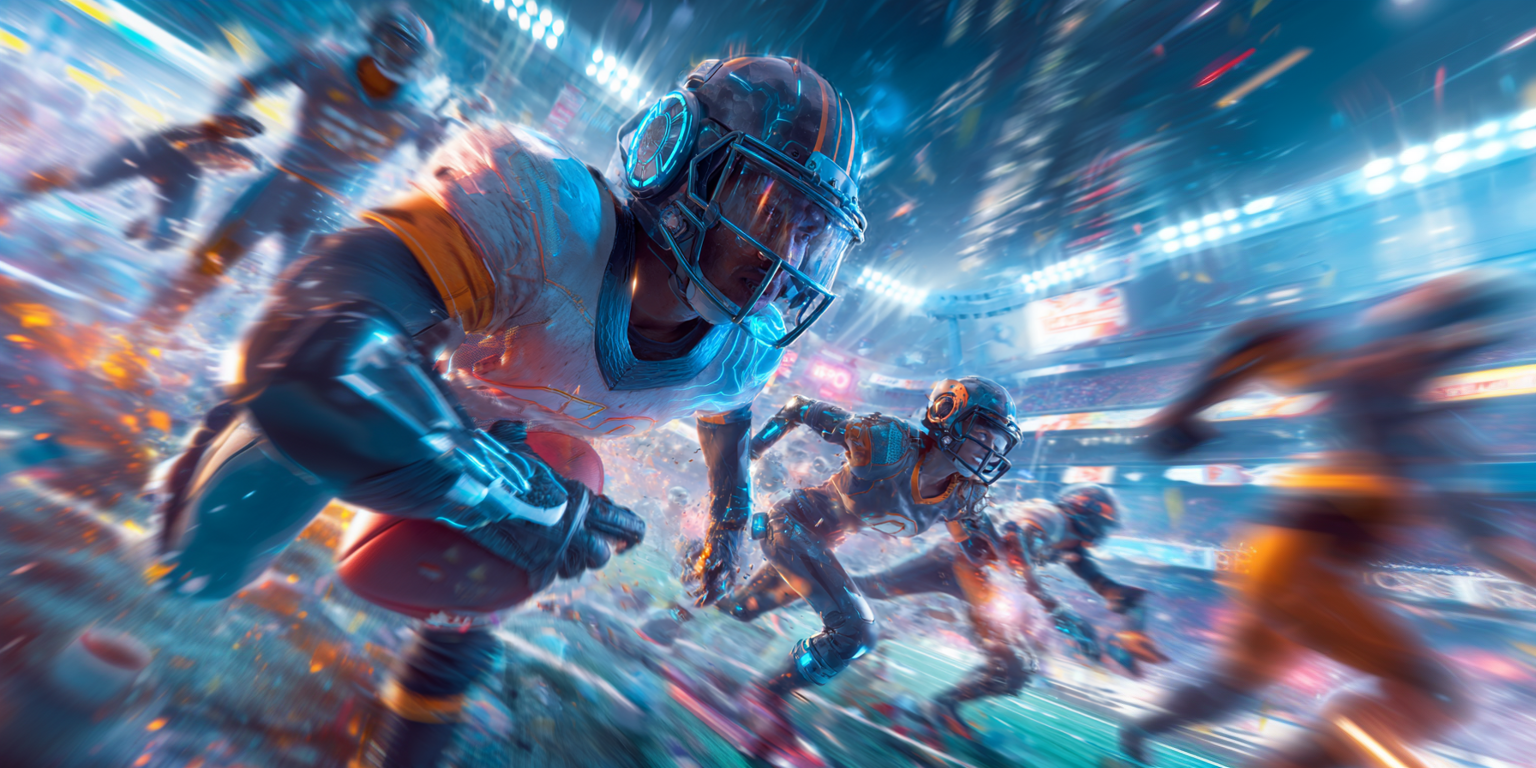- Newsroom
- >
- Gaming's New Playbook for Brands: Unlocking the Power of Sports Fandom

Gaming's New Playbook for Brands: Unlocking the Power of Sports Fandom
The lines between sports and gaming are not just blurring; they're converging to create a dynamic new arena for brands to engage with highly passionate fans. This intersection offers unparalleled opportunities for advertisers to connect with sports enthusiasts in deeply authentic and impactful ways, extending their reach beyond traditional channels.
Sports Advertising's New Heyday: Beyond Traditional Screens
Sports advertising is experiencing a new heyday, fueled by new platforms and evolving consumption habits. Just look at streaming giants like Netflix, Amazon Prime, and Apple TV, which are all aggressively pitching for rights to major sports tournaments. Apple TV's recent F1 bid, riding on the success of their F1 film featuring Brad Pitt, serves as a prime example of this renewed excitement.

Recent events have underscored just how massive the appetite for live sports has become on streaming platforms. The Jake Paul vs. Mike Tyson Netflix fight shattered records with 100 million viewers, while the co-main event became the most-watched professional women’s sports event in US history, drawing an estimated 74 million live viewers globally.
YouTube users are also watching sports on the platform in rapidly growing numbers, with over 35 billion hours of sports content viewed this year, marking a 45% increase YoY. This focus on live sports through new digital avenues underscores a key truth: sports content drives unparalleled attention and engagement.
The Evolving Landscape of Sports Fandom & Gaming's Role
In the past, sports advertising largely revolved around prime-time TV spots and stadium sponsorships, which come with a premium price tag. While these remain valuable, the nature of sports fandom is rapidly evolving, especially among younger generations.
Recent third-party data makes this shift clear. According to the Nielsen Fan Insights study, those aged 16-24 across eight major markets prefer shorter, “snackable” content and are less likely to watch entire games than older fans. The Financial Times, citing YouGov and Morning Consult, found that only 31% of sports fans aged 18–24 watch live matches, compared to 75% of those aged 55 and above, and nearly half of Gen Z have never attended a live professional sporting event.
Instead, Gen Z is spending significantly more time gaming than watching live sports. When they do engage with sports content, it’s typically through short video clips on social media rather than full broadcasts, totaling just 1-2 hours per week. In contrast, they spend 7-13 hours per week gaming. Traditional sports sponsorships simply don’t reach this generation in the way they did with Boomers and Gen X.
As Alex Seyferth of the Chicago Cubs recently highlighted during an Anzu webinar, organizations are now looking to expand their fan base beyond those who can physically attend games or live nearby. Gaming provides a “wonderful place” to connect with these diverse, global fans who may never set foot in a stadium, emphasizing the importance of meeting them where they are.
What makes gaming so potent for reaching sports fans? It’s about more than just passive viewership; it’s about active participation and sustained attention. Sports fans aren’t just watching, they’re playing. This allows brands to engage them directly within sports games when attention is at its peak. Our recent Trends Report shows that players in sports titles demonstrate remarkable engagement, with an average session length of 6.1 minutes, 2.1 times longer than the average for other genres.
This sustained engagement means in-game ads earn more attention and translate into higher CPMs than any other genre. This unique engagement provides a powerful opportunity for brands to stay visible even when stadiums are empty, keeping their message alive year-round, not just during specific seasons or events.

Capitalizing on Real-World Hype: Seamless and Scalable Opportunities
The true power of this intersection lies in leveraging real-world sporting events. Brands can "own the moments that matter" by running in-game ads during major competitions like the Olympics, Super Bowl, or Wimbledon, when fan engagement is at its absolute peak. The upcoming 2026 FIFA World Cup, for instance, represents an immense opportunity for brands to tap into unparalleled global excitement and fan passion, extending their reach to a massive and highly engaged audience.
Our data indicates a significant increase in traffic during real-world tournaments. A 113% increase in traffic is expected during tournaments for soccer games, and a 92% increase in traffic is expected during real-world tournaments for golf. This allows brands to channel predictable real-world hype directly into advertising revenue.
Critically, this allows brands to reach players for a fraction of the cost of sponsoring a real-world game. In-game ads let brands tap into the passion of sports fans at a much lower investment than prime-time sports sponsorships and TV ads. This means brands can jump on the excitement and reach fans who are playing alongside the competitions, whether it's the NFL season or a major F1 race. As Itamar Benedy noted in a recent webinar on the intersection of gaming and sports, while the NFL season runs for 18 weeks, the Madden video game is active and engaged with fans all year round.
This integration feels natural and authentic to the fan experience. Brands can extend their association with sports through virtual pitch-side banners or branded courts, seamlessly fitting into the game environment. This approach offers massive reach, engaging millions of players across multiple sports games from football to tennis to motor racing, often without needing an official partnership.

Why Gaming Captures Young Audiences
Another advantage of tapping into gaming is that it holds a unique and powerful appeal for younger generations, making it an essential channel for brands looking to connect with them. Far from being a solitary activity, gaming has evolved into a primary social platform. For young people, gaming is a dynamic space for interaction, allowing them to connect with friends and build communities around shared passions.
Beyond social connection, gaming allows young people to build and express their identity, offering a space for self-expression and community building. While the average age of a gamer has risen, gaming audiences for many sports titles remain significantly younger than those found on traditional TV or even streaming platforms. For instance, tennis games have a core audience of males aged 18-24, while soccer and motorsport games typically attract males aged 18-34. This demographic insight highlights gaming's effectiveness in reaching these highly sought-after, digitally native consumers.

The Time is Now
The opportunity in the intersection of sports and gaming is clear:
- Leverage Unparalleled Engagement: Capitalize on gaming's unique ability to engage fans for extended periods, translating into higher attention.
- Unlock Year-Round Reach: Extend brand presence beyond seasonal sports events, utilizing the 24/7 engagement of video games.
- Achieve Cost-Effective Scale: Gain access to millions of highly passionate sports fans at a fraction of the cost of traditional sponsorships.
- Connect Authentically with Young Audiences: Tap into a powerful social and identity-building platform to reach digitally native demographics.
For any brand looking to truly capture the attention of sports fans today and cultivate the loyalty of future generations, becoming actively engaged in the gaming arena is not just an option; it's the logical next step

Nick is Anzu's Content Lead. As a gamer with a background in AdTech, he has a unique perspective on the industry and the in-game advertising sector.